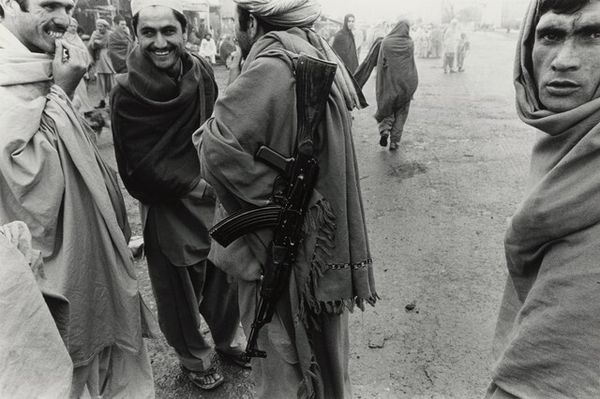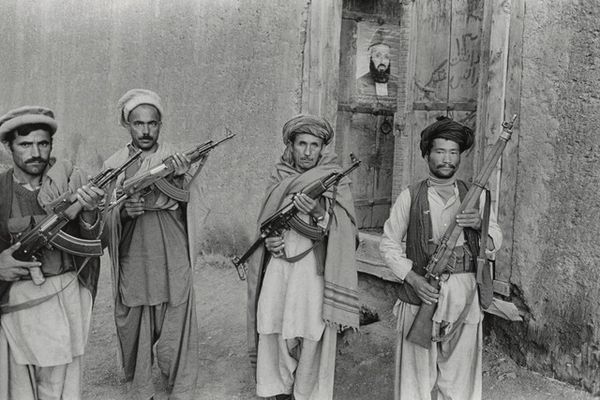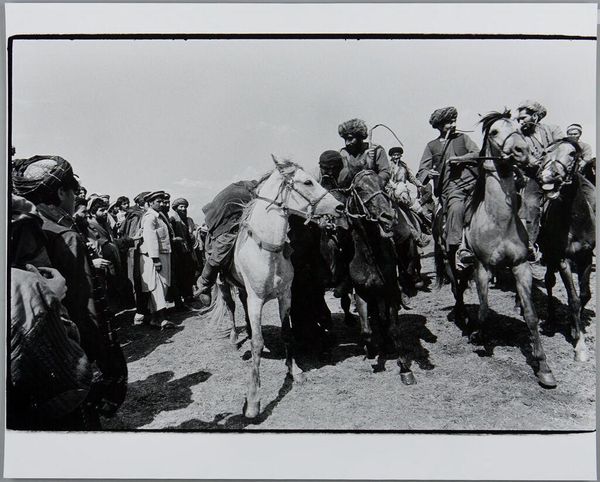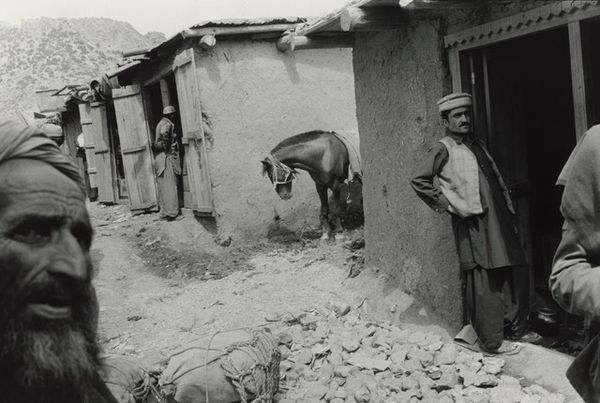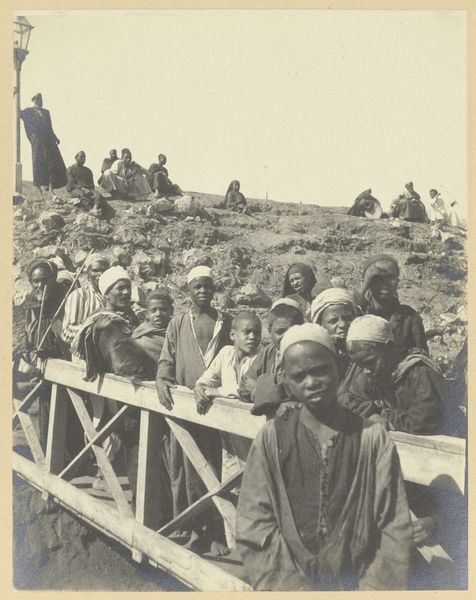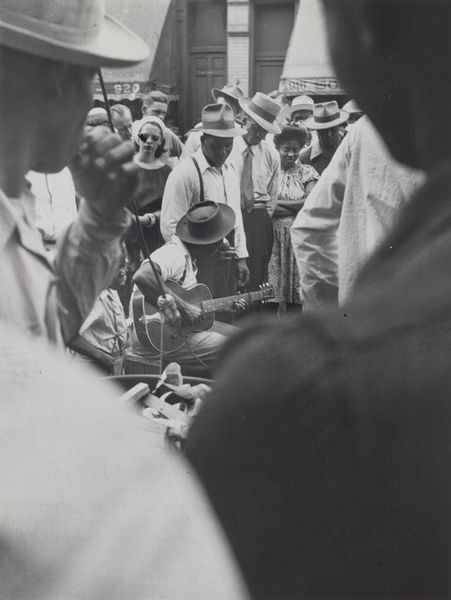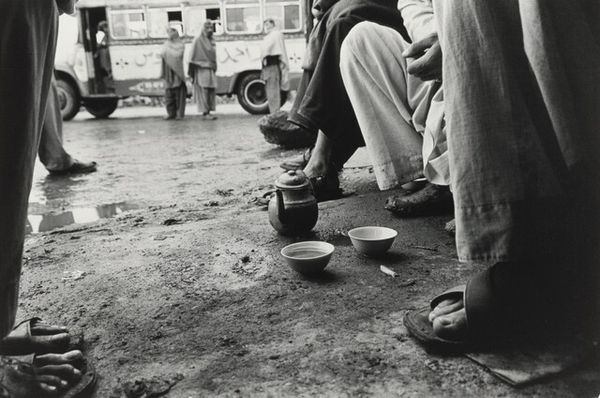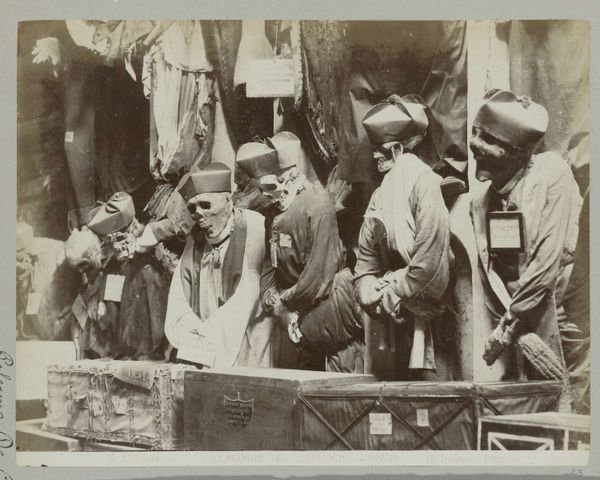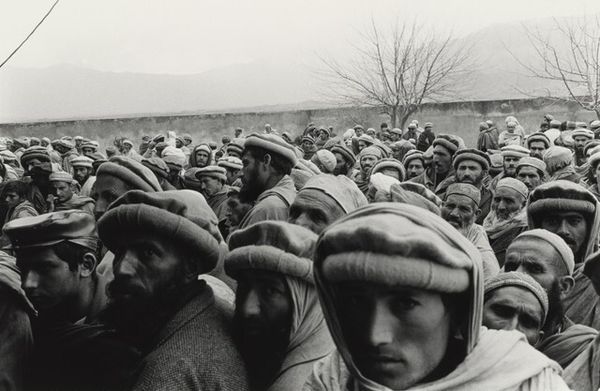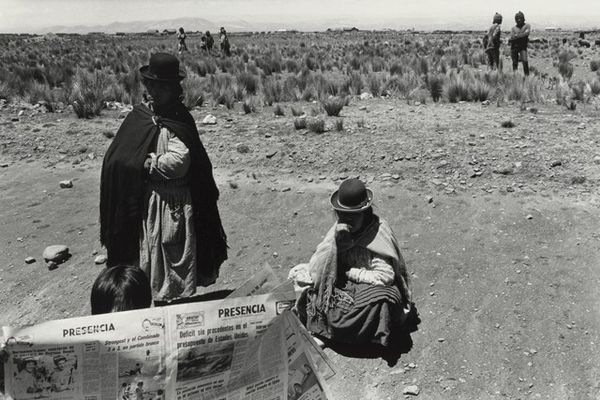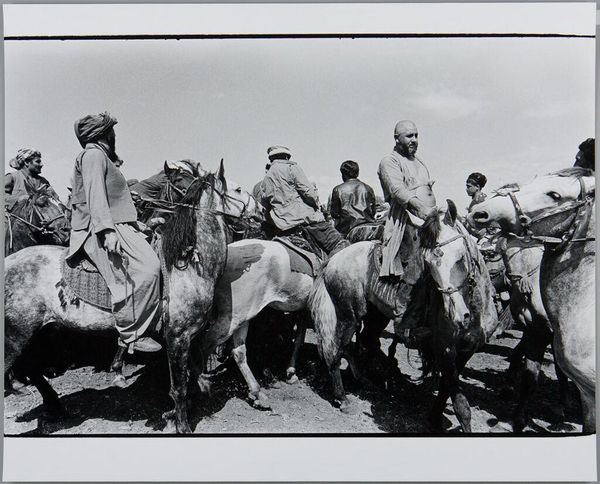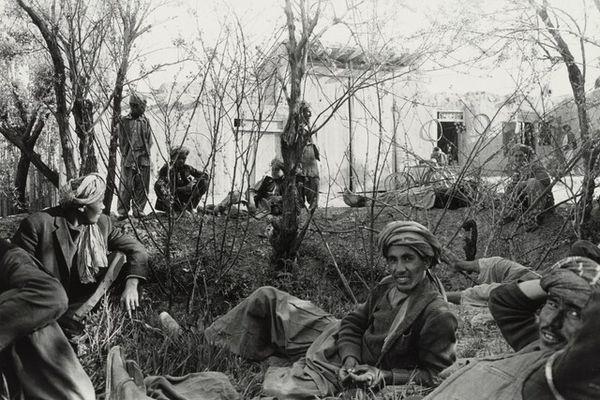
photography
#
portrait
#
black and white photography
#
street-photography
#
photography
#
black and white
#
monochrome photography
#
monochrome
#
realism
Dimensions: image: 26.5 × 39.5 cm (10 7/16 × 15 9/16 in.) sheet: 35.56 × 43.18 cm (14 × 17 in.)
Copyright: National Gallery of Art: CC0 1.0
Editor: This photograph, titled "Jamrud, Pakistan," was taken by Ed Grazda in 1980, using black and white photography. The mood seems heavy, weighted down somehow. What's your interpretation of this work? Curator: Immediately, I’m struck by the contrasts within the frame. We have traditional garments crafted, presumably, with local textiles juxtaposed with the harsh reality of a modern weapon, an AK-47. Consider the labor involved in each: one is a testament to generations of craftsmanship, the other a product of globalized manufacturing, likely imported. How do these materials speak to the economic realities of this place at this time? Editor: That’s a striking point, I hadn’t considered the journey each object had taken to be in the same frame. So you are suggesting this tension, these opposing modes of production, reflect economic forces at play? Curator: Precisely. Think about the accessibility of each item. Who controls the means of production and distribution for both cloth and weaponry? Who benefits? The photograph is not merely capturing a scene; it’s documenting a nexus of local tradition colliding with global power structures, materially manifested in cloth and metal. Is it truly just "street photography," or a documentation of the uneven distribution of labor and its tools? Editor: I see what you mean! I was focused on the faces, but you're right, the tension is almost tangible in those juxtapositions. Thanks for bringing those material aspects to my attention. Curator: Absolutely! Shifting our gaze from the subject to the object allows for a deeper understanding of the forces shaping our world and what gets preserved versus destroyed and made anew.
Comments
No comments
Be the first to comment and join the conversation on the ultimate creative platform.
